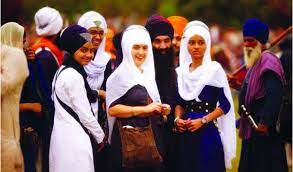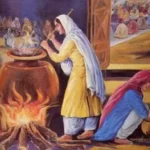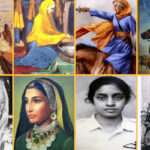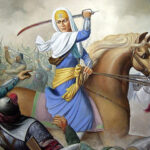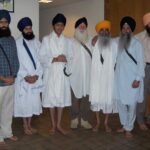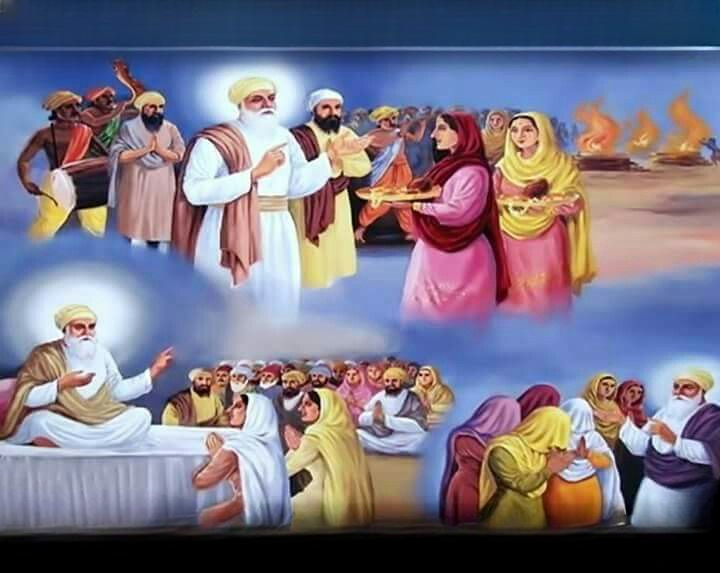The principles of Sikhism state that women have the same soul as men and thus have an equal right to their spiritual development and equal opportunity to gain salvation. Sikhism women participated in all religious, cultural, social, and national activities including the leading religious congregations, participated in the Akhand Path (continuous repetition of the Holy Scriptures), performed the Kirtan (hymnal hymn), and acted as Granthis. .
Guru Nanak proclaimed equality between men and women, and he and the scholars who succeeded him encouraged men and women to participate fully in all the acts of worship and practice of Sikhism. The history of the Sikhs has also documented the role of women, portraying them as men’s equals in service, devotion, sacrifice, and heroism.
History
The Sikh Gurus and various Sikh saints did much to advance the rights of women who were severely oppressed in the 15th century. To affirm the new equal status of women, [5] the Gurus [6] made no distinction between gender in initiation matters, teaching or participating in Sangat (sacred relations), and pangat (eating together).
Guru Amar Das raised his voice against the killing of infants by women
According to Sarup Das Bhalla, and Mahima Prakash, Guru Amar Das does not like the use of the veil for women. He assigned women to lead certain student communities and preach against the culture of satiety. Guru Amar Das also raised his voice against the killing of infants by women.
Guru Gobind Singh not to associate with kanyapapi
Guru Gobind Singh ordered the Khalsa not to associate with kanyapapi, those who saw the woman, and Gugu was also strongly opposed to female genital mutilation. [8] The Guru granted those women baptized in Khalsa, the surname of Kaur, the ruling princess.
Ram Singh Namdhari trying to achieve higher literacy standards and widow remarriage
Father Ram Singh also did much with women’s rights including protesting the killing of children, selling young girls for slavery, the bribery program, the pardah program, [11] and trying to achieve higher literacy standards and widow remarriage.
Singh Sabha
During the Singh Sabha Sikh revival which began in the 1870s, Singh Sabha raised its voice against the purdah system, infanticide, child marriage, sati, the miserable conditions of widows, the practice of bribery, and high costs during the marriage.
Sutak
Sutak is a myth associated with household pollution due to the birth of a child. It is also believed that women are more prone to such pollution. Guru Nanak has strongly criticized such notions of filth/defilement.
If Sutak has to believe in it, then such contamination occurs everywhere, Worms are found in cow dung and wood. There is not single corn of corn that does not survive in it. Water is the ultimate source of life, and everyone depends on it for survival. How can Sutak pollution be avoided? Available in every kitchen. According to Nanak, pollution is not eliminated in this way. Washed by the knowledge of God (enlightenment).
Asceticism
The Sannyasa concept has influenced the attitude of women in India. The natural attraction of a woman was considered a temptation something the Sannyans should avoid. However, the Guru did not view women as barriers to salvation. They reject the idea of self-denial and look to family life, when properly directed, for a better life than self-denial. [16] Instead of celibacy and divorce, Guru Nanak recommends grihastha — the life of the householder.
Menstruation
Menstruation does not lead to women being considered unclean in Sikhism, and women’s behavior is not prohibited during menstruation.
In his book The Feminine Principle on Sikh ideas of the transcendent, Nikky Guninder Kaur-Singh writes:
The “degradation of the female body” expressed in many cultural and religious practices related to menstruation and childbirth “is not in the Sikh worldview. Guru Nanak openly criticizes those who say that pollution is caused by menstruation ‘.
Polygamy
In a culture where monogamy is the norm, Sikh polygamy is relatively rare.
Female Infanticide
Infanticide of women is not permitted, and the Rahitnama (ethics) prevents Sikhs from having any contact or association with those who practice this practice.
Sati (fiery widow)
The burning of a widow, or sati, is forbidden by the text.
The Satis are not the ones who burned themselves at the bridegroom’s funeral; they are satisfied, O Nanak, who die of the pain of separation (from the supreme God)
– Guru Amar Das, Guru Granth Sahib
As a practical step toward eliminating the practice of Sati Sikhism, it allows widows to remarry.
The veil
Sikhism strongly criticized all forms of hard coverage, and Sikh Gurus rejected and rejected the separation and covering of women, which saw a decrease in coverage between certain categories during the Middle Ages. This was emphasized by Bhagat Kabir.
Sit, sit, bride – do not cover your face with a veil. In the end, this will not bring you even half of the shell. The one before you covered his face; do not follow his steps. The only good thing about covering your face is that for a few days, people will say, “What a wonderful bride she is”. Your veil will be true only if you jump, dance, and sing the Glorious Praises of the Lord. Kabeer says, the bride of the soul will win, only if she passes her life singing the praises of the Lord.
